As settlers moved into the rich, fertile areas of the Mary Valley in the 1860s, they wanted a railway to connect them more readily to the outside world and markets for their produce.
The government ignored their early calls, but all that changed when prospectors discovered gold at nearby Gympie in 1867. They had to transport materials and mining equipment into the region. Shipping them to Maryborough port and then along dray tracks to Gympie was costly and time-consuming.
By the end of the 1870s, there was intensive underground mining of the gold reefs. Gold exports comprised 20 per cent of Queensland’s output, outperforming wool in 1875. The mining industry at the time was very influential. It beat other interests to secure rail links to their major mining towns such as Townsville to Charters Towers and Bundaberg to Mount Perry.
An intense battle ensued between Brisbane and Maryborough as the favoured port to export Gympie gold and produce from the valley. A decade of politicking saw Maryborough win out. In 1881, the government built the first railway to link Gympie and was known as the “Mary River line”. It was the first north-south railway line rather than westwards from a port and it became the catalyst for Queensland’s coastal railway route.
The station buildings at Gympie and Maryborough were positioned at the terminus at each end of the line, signifying the dead end in both towns. But within a year of the line opening, Gympie representatives began lobbying for a rail link to Brisbane. Queensland Railways surveyed a route in 1885, and construction commenced the following year. The Gympie-Brisbane line was completed in mid-1891. To enable the extension to be completed, Gympie’s station building was moved and re-sited within the yard on the southern side of the line, as trains coming from the south had a long and challenging climb from Monkland, necessitating an additional locomotive on the last long mile into Gympie.
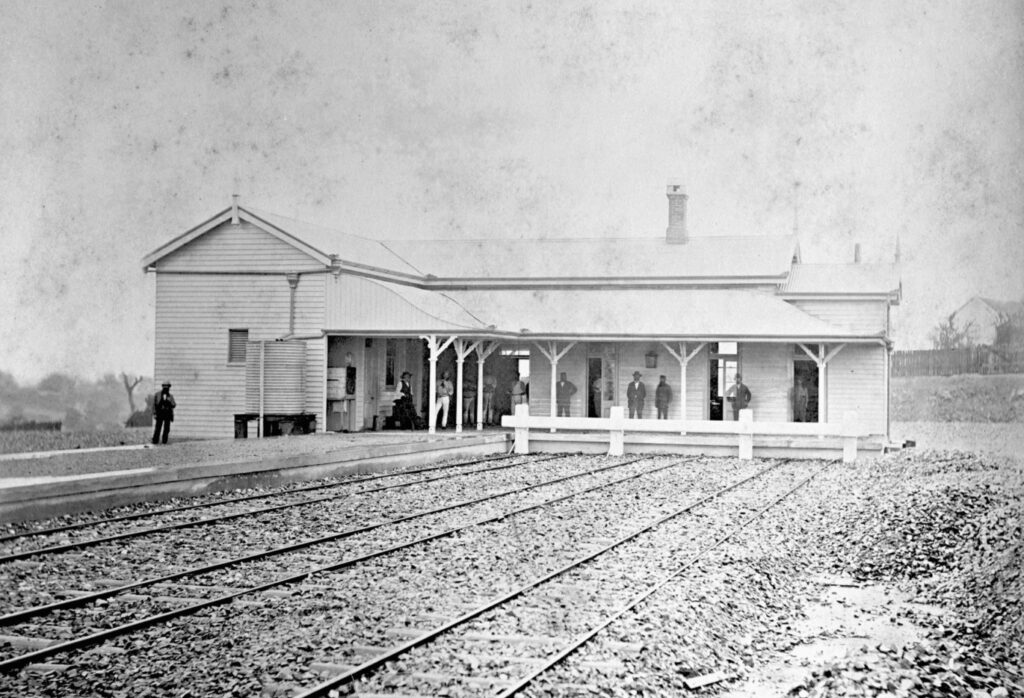
Meanwhile, the Gympie’s railway station adequately serviced the town’s and passengers’ needs. Significant improvements and additions were undertaken at the station from 1911 to 1915. Around that time, there was a lot of spending on construction works of railways and associated infrastructure. The Gympie residents continually lobbied for improvements to their station.
In 1912, plans were drawn up for a substantial new passenger station building. The design was based on the Queensland Railways A series “Pagoda” standard design, which adopted a Federation style in their timber tradition.
Queensland Railways constructed a new railway station in 1913 in central Gympie. Some of the distinctive characteristics included the use of decorative timber detailing, windows with small upper panes of coloured glass, ornate platform brackets, and Marseilles tiles on a picturesque roof form featuring half-hipped ends, projecting gables and lantern vents.
The long, narrow chamferboard-clad building is on an island platform and housed a bar, refreshment room and servery, waiting room, ladies’ room, station master’s office, telegraph and booking office and a sheltered ticket sales area. A small upper floor, serviced by a hand-operated lift, housed the refreshment room’s kitchen, scullery and pantry.
It was the biggest railway station built by Queensland Railways in the twentieth century and arguably one of Queensland’s most stylish and elaborate architectural railway buildings. It was undoubtedly the most attractive government building in Gympie.
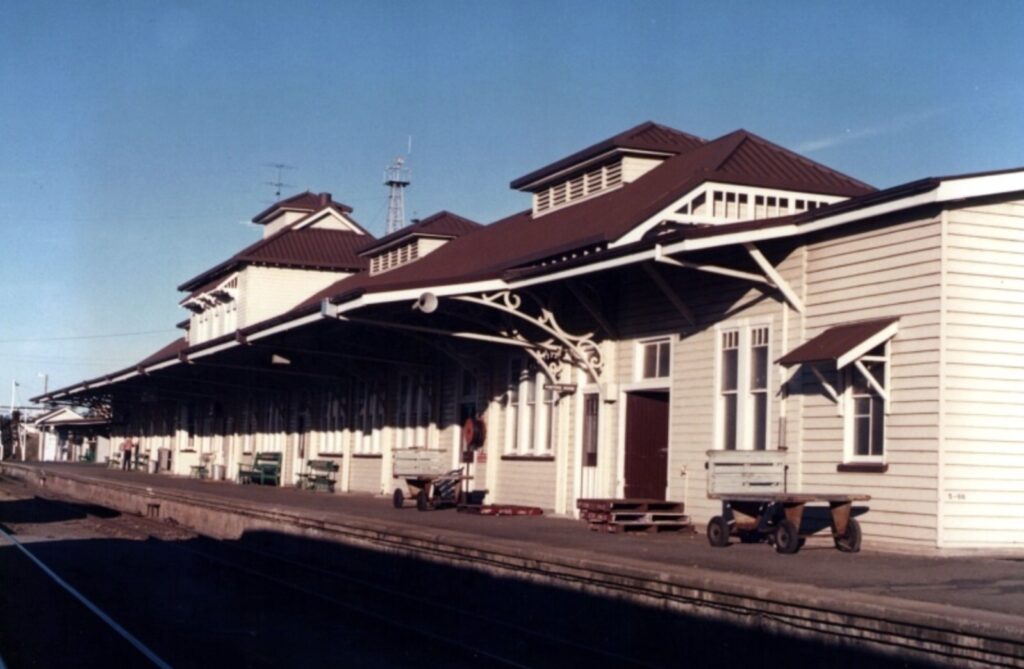
The Mary Valley line
While the Mary River line adequately serviced the interests of Gympie itself, as the timber, fruit agriculture and dairying industries grew in the Mary Valley, the farmers and sawmillers wanted a railway extended into the Mary Valley to Brooloo, about 10 kilometres south of Imbil. In the 1880s, a Mary Valley route had been among the proposals for the line from Brisbane to Gympie, but the government rejected it.
The Railway Commissioner investigated and surveyed a proposed line for the Mary Valley in 1910, and his report stated:
“…considerable traffic in agricultural produce, timber, livestock and dairy products would eventuate”.
The government approved a route deviating from the North Coast line at Monkland, south of Gympie, and extending it to Brooloo, a decision aided by the availability of timber for freight and construction and the council’s offer to fund one-third of the construction costs.
Work commenced on a new line in June 1911 and reached the terminus of Brooloo in April 1915.
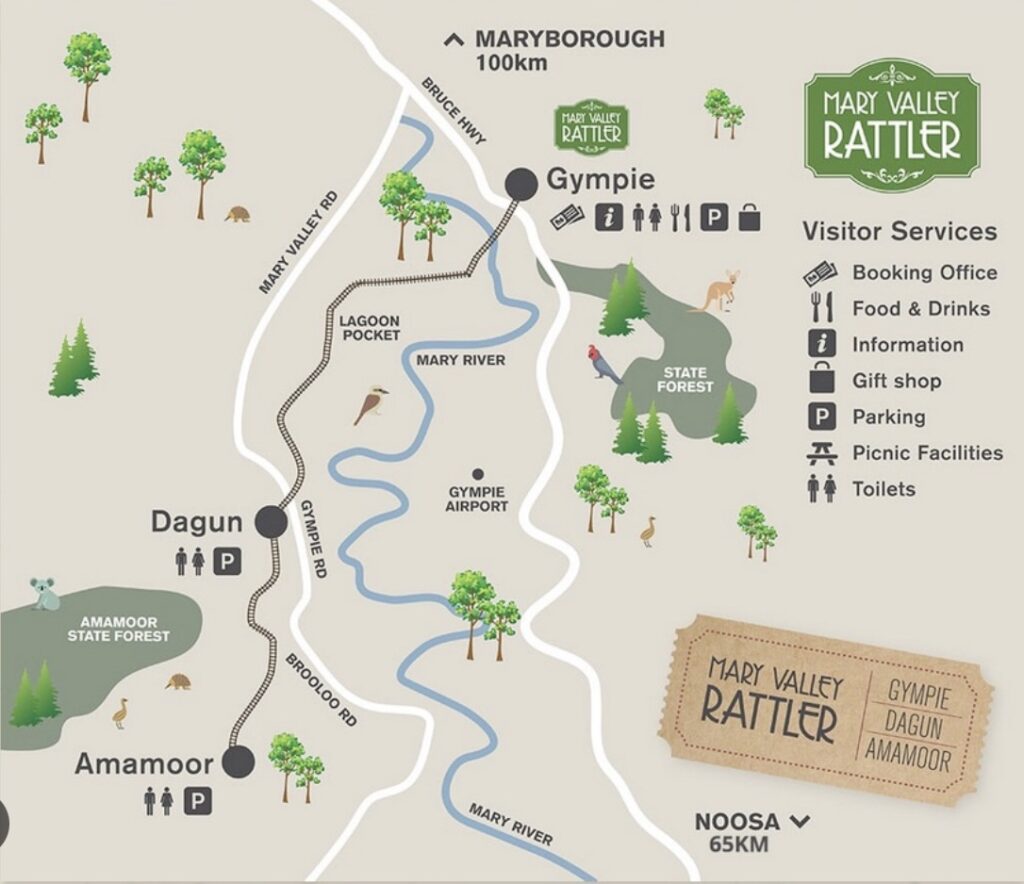
The expansion of the dairy industry prompted Queensland Railways to build purpose-built sheds to store the cream cans at the sidings and stations. The sheds were built to a standard design consisting of 10 x 10 foot cladding made up of horizontal hardwood boards separated by open spaces, with interior boards offset.
The design improved the air circulation for a cooler storage space. Double doors opened onto platforms on either side of the shed. They were set on low stumps and sheltered by a gabled roof. Trains delivered the cream cans to Gympie station, which were then transported to the butter factory and, after being washed, returned by rail to the name inscribed on the cream can.
Along the line, subdivisions of several larger holdings into farm and town allotments near rail stops increased the availability of agricultural land for settlers. It led to the establishment of small townships at Kadanga in 1912, Broloo, Amamoor, Imbil in 1914, and Dagun in 1917.
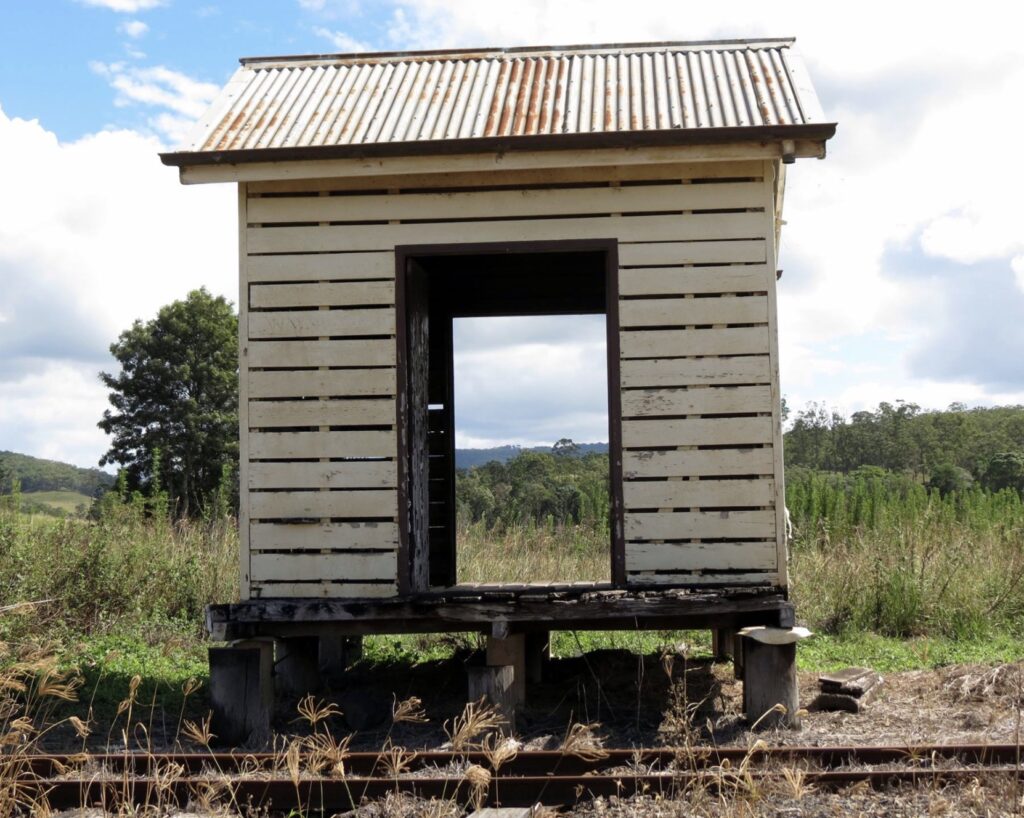
By 1921, there were 93 dairies located between Dagun and Broloo, with an average herd size of 31, producing over half a million pounds of cream. Before roads, transport by railway was the most efficient means of delivering cream to the butter factories at the nearest railhead.
Dairying was Queensland’s most widespread agricultural industry in the 1930s and was the state’s second most profitable export industry from 1936 to 1941, accounting for 20 per cent of primary production. By the late 1930s, one in eight Queenslanders lived on dairy farms. By 1937, the Gympie district was Queensland’s most significant milk and butter producer.
By 1939, the 12 butter factories in the Wide Bay Burnett region produced almost one-third of Queensland’s butter. The cream sheds along the railway line signified the importance of the railway in transporting dairy produce.
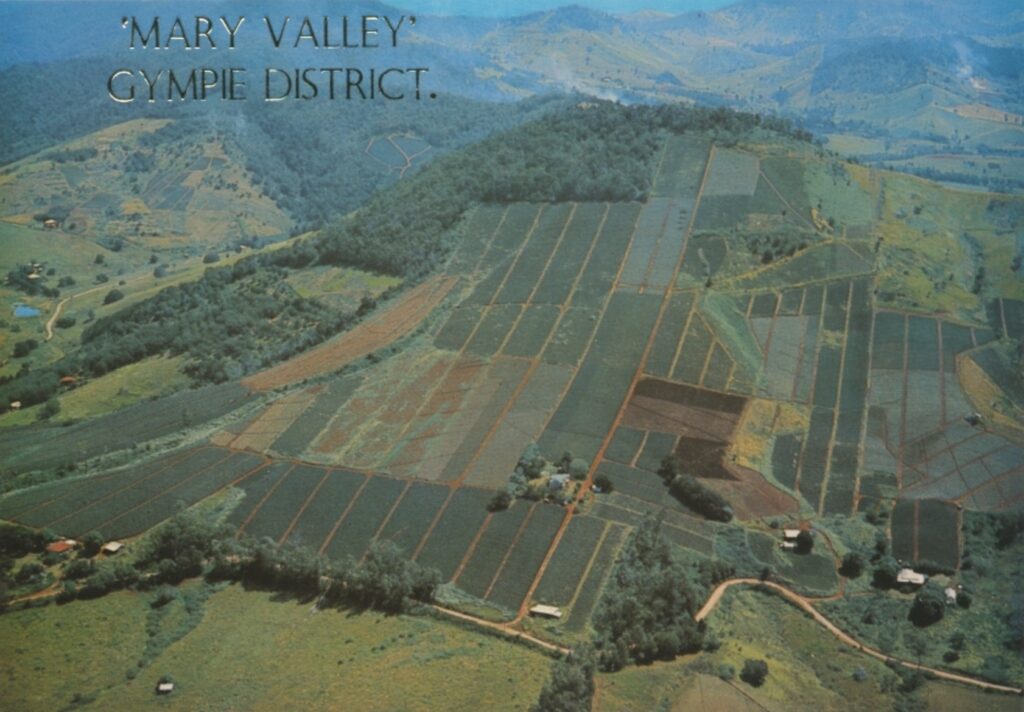
As well as dairying, the Mary Valley has a long history of producing fruit and vegetables. In 1912, the Department of Agriculture selected 40 acres on Amamoor Estate for an experimental fruit farm. The fruit grown included bananas, pineapples, and vegetables, notably beans. The Gympie district was the largest banana producer in Australia in the 1920s. A fruit grower’s cooperative in Amamoor ran until the early 1980s. It served as a rural store for farmers, co-ordinating the retrieval and loading of fruit and vegetables from the various farms in the district onto the goods train. Fruit trains began operating from Gympie to Melbourne in 1923.
After the North Coast railway line was completed to Cairns in December 1924, more goods and people came through Gympie. Further substantial alterations to the Gympie station were made in the second half of the 1920s. The refreshment room and the northern end platform were extended.
Gympie railway station became one of Queensland’s busiest stations, servicing the North Coast and Mary Valley lines. During World War II, Gympie was a critical depot and meal stop for troop trains. At the time, the refreshment room employed two cooks, a manager and 15 waitresses.
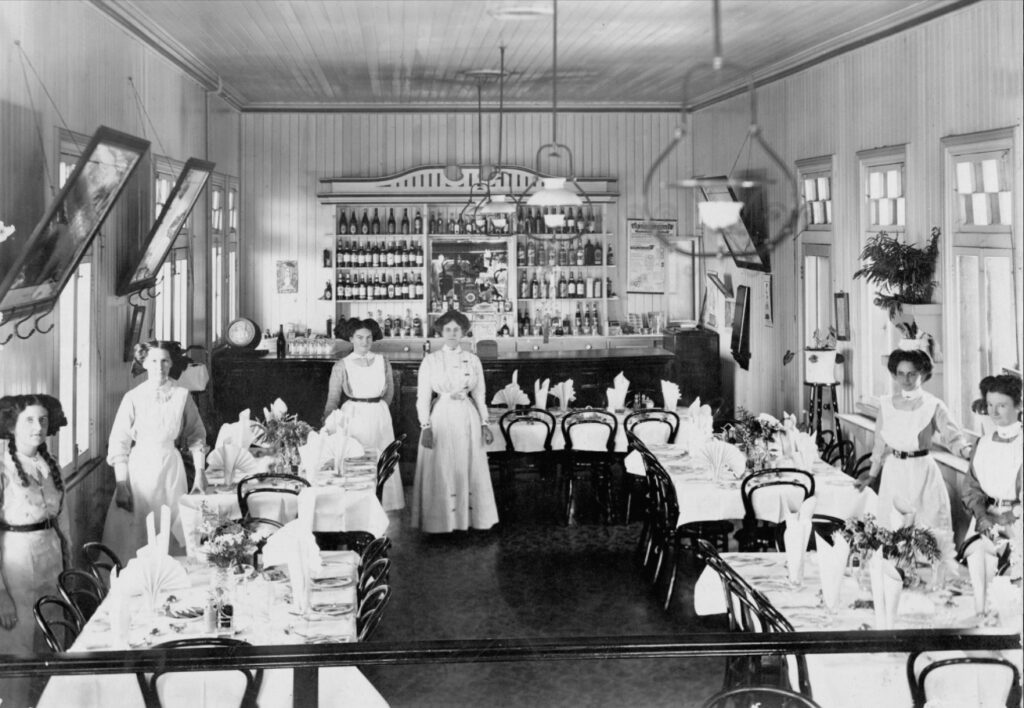
Post-war, the local small crops industry continued to expand. The Mary Valley produced more pineapples between 1952 and 1956 than any other district in the state. By 1955, 900,000 cases of pineapples, 85,000 cases of beans and 20,000 cases of bananas were sent to the Gympie station by rail.
The beginning of the end
Over time, however, the operations at Gympie railway station changed. It was due to various factors, such as the transition from steam locomotives to diesel and the gradual changes in the rural industry. As more roads were built to connect the multiple settlements in the Mary Valley, a total reliance on rail transport dwindled.
In 1970, the evening trading at the 24-hour refreshment room stopped before ceasing altogether in 1972. By 1981, the main railway station building operated less as a busy platform servicing train services and instead hosted offices for staff and spaces for records and other storage.
By the end of the 1980s, the operation of Gympie railway station was largely redundant. As part of upgrading and electrifying the North Coast line between Brisbane and Rockhampton, an eastern deviation of the railway line was built to bypass Gympie. A new station was constructed at “Gympie North” in 1989. The original Gympie station was relegated to a goods and freight depot before officially closing in 1995.
There was a gradual decline in the previous decades of the produce delivered on the Mary Valley branch line. Consequently, the regular passenger and goods services between the Mary Valley and Gympie ended. However, the line was not formally closed.
A new door opens
The beautiful and ornate Gympie railway station has played an important role in Queensland’s railway network for over a century. It was an important social space for the wider community who greeted and farewelled family, friends and distinguished guests.

The local community did not want to see their heritage Mary Valley railway fall by the wayside. They saw an opportunity for tourists to use the railway to see the wonderful valley and learn about its proud agricultural and timber-getting history.
They formed a new community organisation called the Mary Valley Heritage Railway in 1996 and advocated for the line to be reopened and to operate tourist train services. They successfully negotiated a proposal to conduct tourist steam train services on the line. They became custodians of the Mary Valley branch line and much of the Gympie station complex.
In May 1998, the Mary Valley “Rattler” service began, allowing visitors to experience a steam train ride through the valley. Around 33,000 guests made the trip each year. However, major track maintenance work was required, and in 2012, tourist trips stopped while work commenced and took six years.
The Mary Valley Rattler began services again in October 2018, operating diesel and steam passenger trains and two types of railmotors between Gympie and Amamoor.
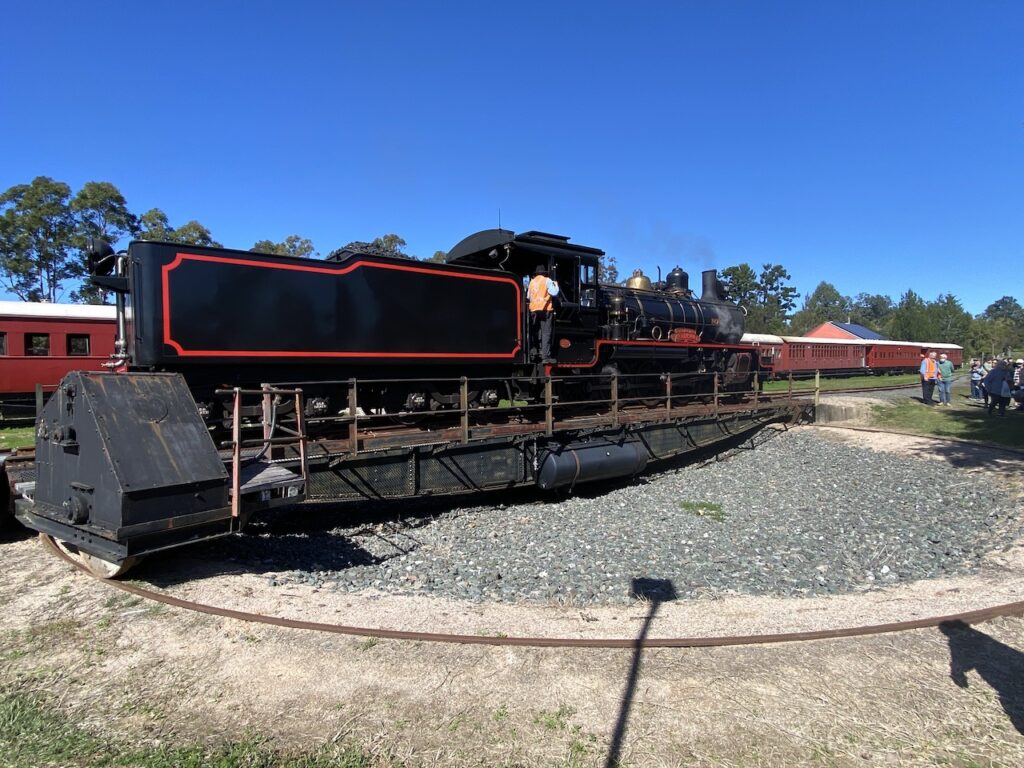
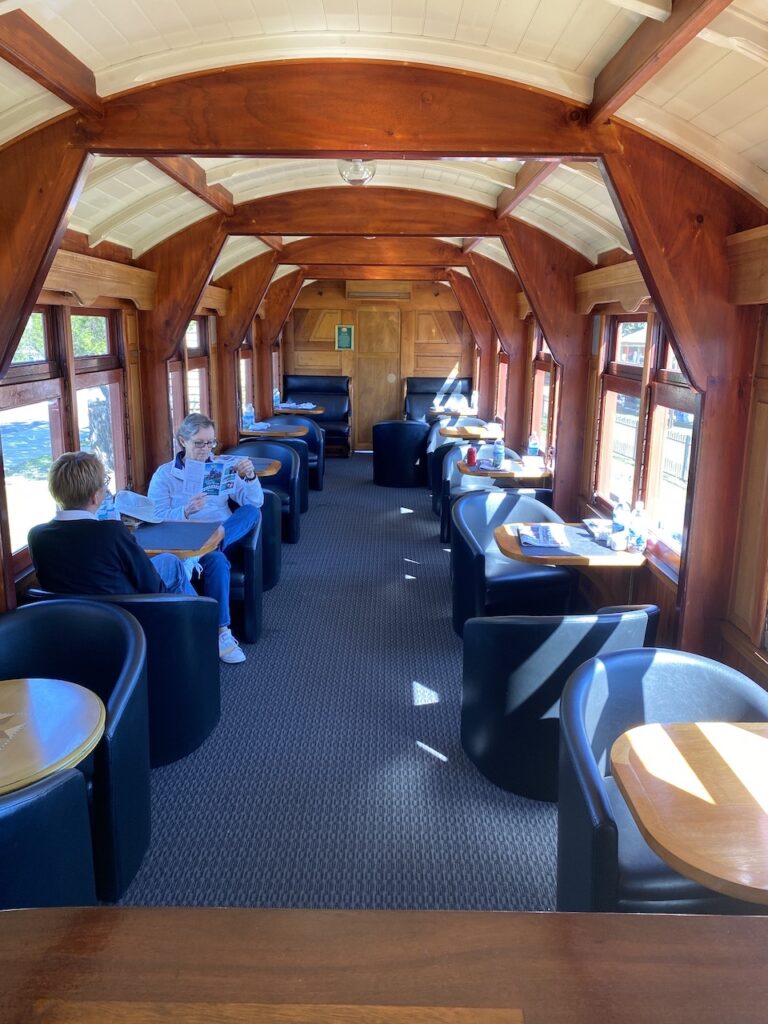
A not-for-profit community enterprise comprised of volunteers and railway enthusiasts from the local community runs the service.
The Mary Valley Rattler provides a memorable experience for tourists, attracts visitors from around the world and is a major tourist drawcard for the local region.
A more appropriate use would be hard to find.
There is a group of locals, with the support of the Gympie Regional Council, who want to convert the old railway corridor no longer in use between Amamoor and Imbil into a Rail Trail to allow visitors to enjoy the unique paradise of the area.
While the Mary Valley has changed its character from a strong dairying district, it still retains its fruit and vegetable growing heritage. There is a wide variety and diversification of crops today. The valley supports farmers who grow mangoes, avocadoes, various citrus, custard apples, pineapples, persimmons, macadamia nuts and various vegetable crops. Bees and honey production is also a vibrant industry within the valley.
Locals host farmer markets regularly. The variety on offer varies depending on the season.
The Mary Valley is the home to numerous wild macadamias that grow in the rainforests of Amamoor State Forest along the Amamoor Creek Road. Macadamias are Australia’s only native plant successfully used cultivated as a food crop worldwide.
The widely popular annual Gympie Muster Musical Festival is also held in the Mary Valley. The Webb brothers started it on their Thornside property, and since 1982, the Apex Club of Gympie has organised the event. In 1985, the Muster shifted to Amamoor State Forest as many thousands of revellers arrived up to two months before the event to get the best camping spots. The Muster is held simultaneously over four days at several venues.
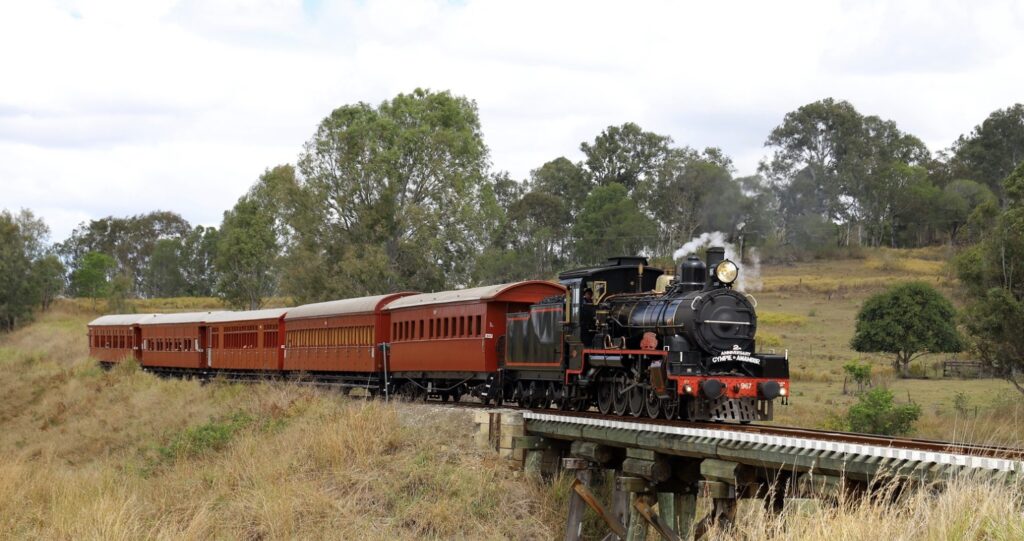
Interesting read.
As the son of a Railway Stationmaster, my childhood was always ‘next door’ to a railway line and to steam engines.
Thanks for giving me a nostalgic journey.